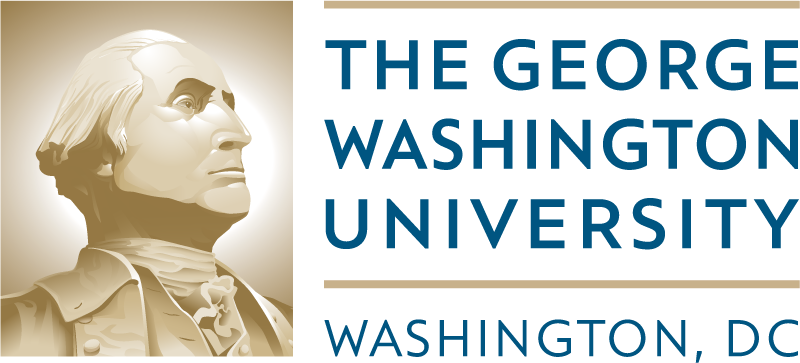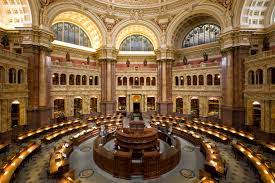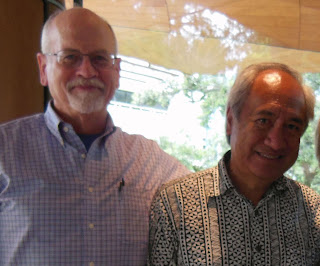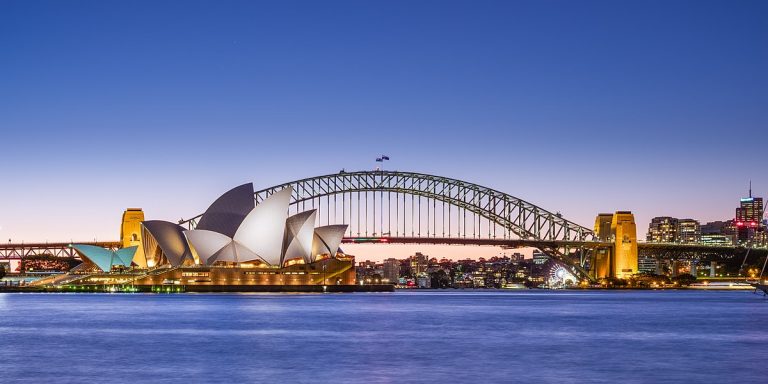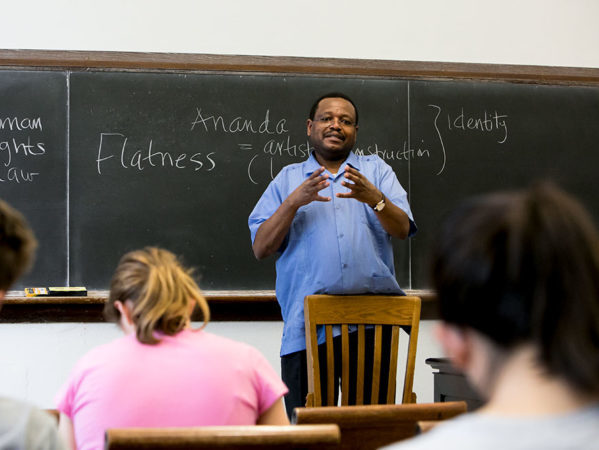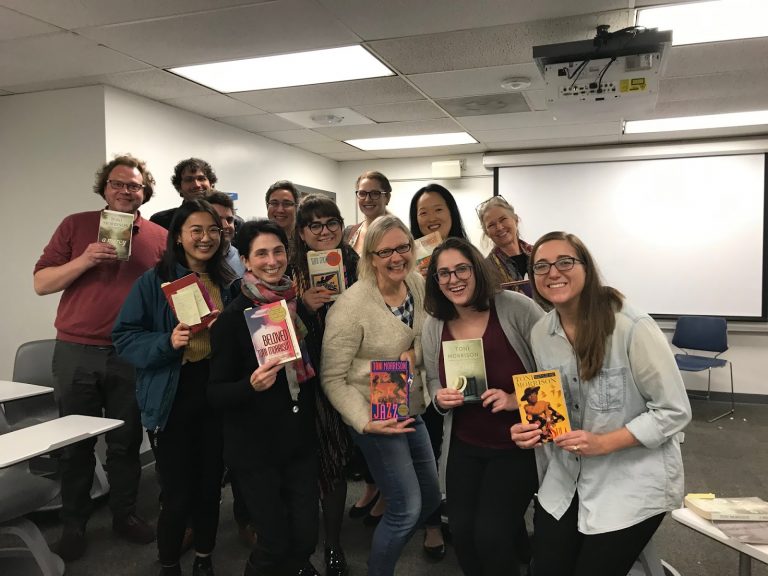Tour of the Library of Congress in GW Magazine
Touring a National Treasure
Alumnus shows students Library of Congress’ riches

A tour of the Library of Congress allowed students to admire the building’s remarkable artwork and architecture. Photo by Rick Reinhard
As they perused the personal collection of one of our nation’s founding fathers, GW students took a break from their textbooks to learn another kind of literary lesson.
Stacked in the Library of Congress’ brimming bookshelves are the eclectic volumes of Thomas Jefferson, whose nearly 6,500 books—which explore everything from political philosophy to beekeeping—were purchased in 1815 to begin what has become the world’s largest library.
“Jefferson wasn’t a collector,” the docent says as students peer through the preservation glass. “He had a curious mind. He was truly interested in everything.”
Just a few miles from the Foggy Bottom campus, about a dozen GW students tapped into a uniquely Washington experience in March as they toured the Library of Congress. They strolled through the magnificent domed reading room, gazed at its art-filled halls, and examined one of its most prestigious rare book collections.
Their guide, alumnus Malcolm O’Hagan, Doctor of Engineering ’66, a docent at the library for about two years, organized the two-hour visit to share the library’s gems. A retired lobbyist for the electrical manufacturing industry, Dr. O’Hagan now audits GW English classes and says he wanted to connect an unparalleled world resource to the classroom.
“It’s such a treasure here,” Dr. O’Hagan says. In class, students may read old works, “But here they get to see rare books, they have a chance to look at the beautiful illustrations. I was hoping it would pique their interest.”
The Library of Congress, which occupies three buildings on Capitol Hill, boasts more than 138 million items on about 650 miles of bookshelves. The collections include more than 32 million books and other print materials in 470 languages; more than 61 million manuscripts; the largest rare book collection in North America; and the world’s largest collection of legal materials, films, maps, sheet music, and sound recordings. As if that’s not impressive enough, the library’s halls and its reading room are artistically stunning. The Thomas Jefferson Building, constructed in 1897, is considered one of the most remarkable pieces of architecture in the nation’s capital.

GW English students got an exclusive look at a rare book collection during the tour. Alumnus Malcolm O’Hagan, Doctor of Engineering ’66, (back row, second from left) was their guide. Photo by Rick Reinhard.
When they weren’t admiring the colorful hallways and mosaic ceilings, students stepped into the reading rooms reserved for members of Congress and got an up-close look at the donated rare book collection of American businessman Lessing J. Rosenwald. In an exclusive viewing, Library of Congress curator Daniel DeSimone showed GW students some of Rosenwald’s most prized volumes, using the woodcuts, engravings, and sketches to explain the evolution of text illustration. A rare edition of a book from Dante’s Divine Comedy included original engravings by Italian Renaissance artist Sandro Botticelli, while a copy of Edgar Allan Poe’s famous poem The Raven displayed the artistic work of French painter Édouard Manet.
The participants—mostly undergraduate English majors, one PhD student, and one English alumna who signed up for the trip through an announcement on the English department’s blog—say the tour reminded them of their unique opportunity to explore in a resource-rich city.
“Sometimes it’s so easy to stay on campus,” senior Madeleine Starkey says, “but this was a way to connect students to the resources that D.C. offers.”
“I think a lot of people assume Washington’s resources are for international affairs or political science majors,” senior Rosemary Tonoff adds. “But this was a perfect example of what is out there for those in the humanities.”
Dr. O’Hagan, who focused on science and engineering in college and graduate work, says he is now reveling in his GW English courses, where he has deep discussions with other students about literature. After the Library of Congress tour, Professor Jeffrey Cohen, chair of the Department of English, believes the students will have even more to talk about.
“This is an extraordinary opportunity. It’s one thing to say to students, ‘Read the poems of William Blake,’” Dr. Cohen says. “It’s quite another to see the text up-close as a work of art.”
—Jaime Ciavarra
